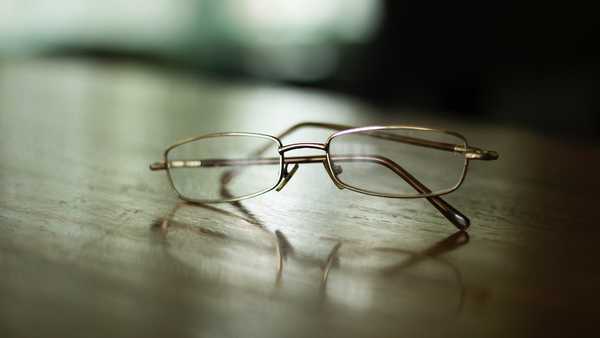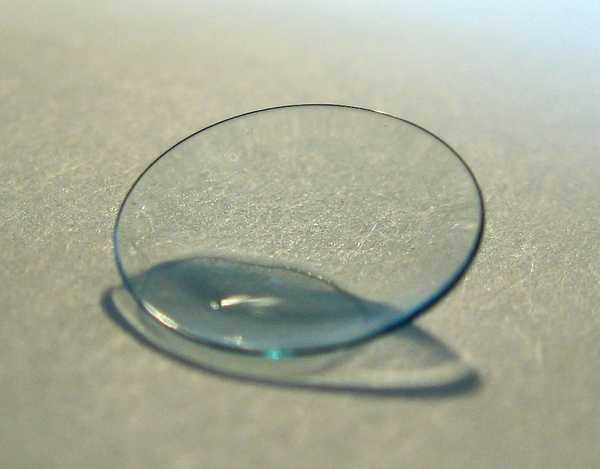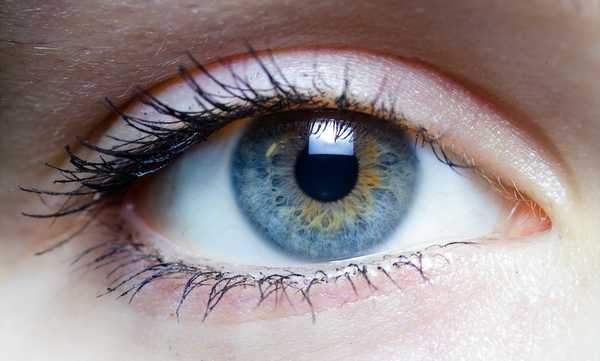How To Correct Astigmatism And Get Better Vision
There isn’t much that sows confusion as much as astigmatism does. But fear not! Astigmatism isn't anything to worry about. Correcting astigmatism isn’t as complicated as people think.
Astigmatism is easily fixed with glasses and contact lenses (and lasik, icl, cataract surgery, etc). The correction simply bends the light back into a “basketball shape” so that it hits the retina perfectly.
Astigmatism can be corrected with glasses or contact lenses pretty well. Astigmatism involves a power (how bad the astigmatism is) and a direction (which side curves the most; remember, astigmatism is kinda like the shape of a football). The glasses prescription simply matches up to those numbers to correct the astigmatism and vision.
But Glasses aren't always perfect with astigmatism

Let's correct astigmatism with these!; Image by Mel Baylon on Unsplash
Glasses work well, when they work. However, glasses rely on a few thing to work the best. This is especially true when we are using glasses to correct astigmatism. Astigmatism is simply just a different way of correcting vision.
Normal nearsightedness and farsightedness isn’t too difficult to correct. You simply place the correct lens in front of the eye. With astigmatism, however, you need the correct lens, but the lens also must be pointing in the correct direction. If the lens is pointing in the wrong direction, you can actually ADD more astigmatism to vision!!
Glasses are designed to sit in front of the eyes in one direction. If you lose a nosepad or one of the glasses ear hooks becomes bent, than the glasses can become tilted. This shifts the astigmatism correction away from the optimal correction and vision starts to become blurry and distorted.
Tilting glasses isn’t the only way to blur vision with large amounts of astigmatism. Simply looking through the peripheral part of your glasses can have the same effect. Glasses are designed to be placed perpendicular to your eye. When you look through your glasses at an angle, the glasses become effectually slanted in front of your eye, causing more blurred and distorted vision! Thus, to look to the sides, people with glasses often instinctively turn their whole head to keep the glasses and their vision straight ahead!
Historically, glasses have been a great invention to correct vision. But as with everything in life, nothing is perfect.
If you prefer to wear contact lenses, there are also ways to correct astigmatism. I am talking about toric contact lenses.
How do Toric Contact Lenses Work?

Contact Lens; Image by Bryan Tong Minh / CC BY
Astigmatism correcting or toric contact lenses achieve the same goal as glasses.
To keep the contact lined up in the correct direction, the bottom part of the contact has a small weight to allow it keep correcting your vision.
If you are familiar with astigmatism, you know that astigmatism must be corrected in a certain direction or axis. If the astigmatism correction moves to a different direction, than it doesn’t work well or even makes things worse! Now, it doesn’t take much to figure out by looking at contact lenses that contacts are circular. Toric contact lenses are also circular! So must one place the contact lens exactly in the right direction every day? Boy that would be a challenge and hassle!
Contact lenses that correct astigmatism have a slight weight on one side of the contact lens. After the contact lens is placed on the eye, the contact lens slowly rotates through the magic of gravity until this weight is at the very bottom. And this allows the cornea to assume the exact same position every day (aside: mostly; the contact can rotate slightly throughout the day).
See also Are Astigmatism Contacts Weighted? on EyeMountain.com to learn more
Toric contacts not only come in different powers of astigmatism, but they also come in different directions that allow the settled contact lens to correct your astigmatism. When being fitted with these contact lenses, it is important to have an exam to confirm that the correction is in the right location. After that, you are in astigmatism-free land!
Correcting Surgically
But what happens when you’ve decided it’s time to give up contact lenses and glasses? Old rumors that lasik can’t correct astigmatism don’t apply with today’s procedure. All refractive surgery such as LASIK, PRK, and the lens-based procedures ICL and refractive lens exchange correct astigmatism! When you eventually need cataract surgery, astigmatism is corrected with that procedure as well!

Let's get out of glasses and contact lenses; Image by Laitr Keiows / CC BY-SA
Lasik
Lasik is perfectly capable of correcting astigmatism! Gone are the days where you were excluded from a procedure because of your astigmatism.
Some people are near-sighted, some people are far-sighted, some people have astigmatism. Astigmatism is simply just a different kind of vision impairment similar to nearsightedness and farsightedness. To correct astigmatism in glasses and contact lenses, you just add a different kind of lens correction and voila! astigmatism corrected.
Lasik isn’t all too different, it is just a different pattern of treatment. To correct astigmatism, lasik simply reshapes the cornea in a different pattern to eliminate the astigmatism.
In fact, lasik can sometimes be better than glasses and contact lenses for astigmatism. As mentioned above, when people wear glasses to correct astigmatism, the correction is only perfect when they look straight ahead. If they look off to the side without turning their head, they are looking through a different part of their glasses and can get distortion from their astigmatism. Astigmatism correcting contact lenses can be equally annoying since they can move around throughout the day causing vision to randomly become blurry. Lasik, on the other hand, by putting the astigmatism correction right on the eye where it is needed, doesn’t have those same issues.
The Recovery After Astigmatism Correction

Getting rid of astigmatism to make everything spherical; Image © Tomas Castelazo, www.tomascastelazo.com / Wikimedia Commons
But patients with astigmatism do have subtle differences in their recovery after lasik compared to patients without.
For many patients undergoing lasik, recovery is immediate. The very next day, the sharpness and clarity are out of this world. Patients who have astigmatism (especially very large amounts) have a slightly different story. Right after surgery, despite having zero prescription to their eyes, the vision appears good but not outstanding. It is only after about a week that these patients feel good about their vision.
What is happening here? The difference is that over the course of their whole life, their brain has adjusted to their astigmatism. When you suddenly eliminate it, the brain has to get used to a whole new way of seeing. And you will be able to see during this period, vision just won’t feel sharp until the brain “gets it”. This same concept applies to changing a glasses prescription by a large amount as well. Similar to after lasik, it takes a few weeks to adjust to that new glasses prescription.
None of this is problematic, it just means that you need not worry the first day out when your vision doesn't feel like it is all the way there. So in the mean time, hang in there and enjoy as things settle in.
Beyond Cornea Laser Eye Surgery
So lasik can correct astigmatism. Is the same true for other procedures? Why yes it is! There are two main ways astigmatism is corrected with other vision correction procedures such as ICL, cataract surgery and refractive lens exchange or lens replacement surgery. The first involves a special lens called a toric lens.

Life is clearer without astigmatism; Image by Atia Naim on Unsplash
Toric Lens
Astigmatism requiress a different type of correction. With lasik, this correction is applied directly to the cornea. Other procedures (ICL, lens replacement, cataract surgery) involves placing a brand new lens within the eye.
In the most basic form this lens is selected to correct simple spherical prescription (basic nearsightedness and farsightedness). However, this lens can be shaped just like how glasses can be shaped to balance out the effect of the astigmatism and create that vision like basketball shape. This type of lens is called a toric lens.
Toric lenses exist for any procedure involving lenses and can correct a very high amount of astigmatism. And do a pretty fine job while at it.
But about for smaller amounts of astigmatism? This is where a separate technique comes into play.
LRI (Limbal Relaxing Incision)
Refractive surgeons have lots of tools in their toolbox to correct and improve vision. Some of these tools, techniques and procedures are brand new, others work well enough to persist over the years. A LRI or limbal relaxing incision is a specific procedure used to correct astigmatism. LRIs are in no way a new concept. The principles behind this technique have been known for decades! So why am I talking about it now? Because LRIs are still used pretty frequently to correct astigmatism - especially lower amounts of astigmatism.

Breaking down astigmatism with an LRI; Image by Unknown author / Public domain
To understand how LRIs work, let’s first picture a cornea with astigmatism. Remember that astigmatism causes the cornea to be shaped like a football. One direction (or axis) is steeper than the other direction. To correct the astigmatism, you just need to convert the football shaped cornea into a basketball shaped one.
A limbal relaxing incision is a groove made on the steep part or axis of the cornea to relax that part and make it flatter. Imagine you have a picture and you roll the sides together to make a tube. You wrap string around the picture to keep it in place. The picture has a steep axis (the rolled sides) and a flat axis (the unrolled top and bottom of the picture) just like astigmatism. By snipping the string, the poster is no longer under tension and can unroll and become flat.
By making the steep part of the cornea flatter, it matches the flat part of the cornea to create that basketball shape and get rid of astigmatism.
While LRIs have been around for quite some time, technology has improved the way they are performed. In the past, blades were the only way to provide this correction. While using blades is safe, blades aren’t quite as predictable.
Today, more commonly LRIs are performed using lasers. Lasers have made it very easy to create LRIs and thus they are often performed in conjunction with laser-assisted refractive cataract surgery. Laser created LRIs, although still not perfect, improve upon blades and make astigmatism correction more predictable. All in the name of giving you the very best possible vision!
Correcting Astigmatism with the Toric ICL
Many patients have a high prescription and astigmatism and need ICL.
Similar to with cataract surgery, low amounts of astigmatism can be corrected with limbal relaxing incisions during ICL.
But for higher amounts of prescription, the special toric ICL lens is used. This more easily and more accurately corrects larger amounts of astigmatism. But how much does this actually correct?

This mountain looks like it has a high amount of astigmatism; Image by Diliff, CC BY-SA 3.0, via Wikimedia Commons
The toric ICL corrects up to 4 diopters of astigmatism (thats the middle number in a glasses prescription)! That's actually quite a high number, very few people end up being over 4 and there is a good chance that your level of astigmatism falls within this range.
Side note: in fact, it's quite a good manufacturing achievement to be able to correct that much. ICLs are designed to sit horizontally in the eye and thus there are many many different lens combinations of ICL power, astigmatism power AND astigmatism direction that all need to created!
The astigmatism correction with ICLs is really good! As long as you have good measurements before the surgery, it is very rare for the correction to be off post surgery. Unless, of course your astigmatism prescription is larger than what the maximum ICL can correct. However, not to worry, even if the maximum power lens isn't enough for you, a lasik touch-up can easily correct the remaining amount.
At the end of the day, either with ICL alone or combined with lasik, astigmatism can be defeated!
See also What Is A Toric ICL? on EyeMountain.com to learn more
How is Astigmatism Corrected with Cataract Surgery?
No exception when it comes to cataract surgery.
Cataract surgery can be a great opportunity in life to get out of glasses. To achieve this goal, correcting astigmatism is necessary to provide the very best possible vision. There are two main ways this is achieved.
- Again, LRI's are used with cataract surgery, especially with lower amounts of astigmatism and with laser-assisted cataract surgery.
- But toric lenses again shine when correcting astigmatism with cataract surgery. Toric lenses can correct up to an insane amount of 6 diopters of astigmatism! Completely changing how you see for the better.
Also check out This Is The Best Cataract Surgery For Astigmatism on EyeMountain.com to learn more

Freedom with astigmatism free eyes; Image by 272447 from Pixabay
Summary
So what can be done about astigmatism? Don’t worry, almost everything!
Related Articles
Also check out EyeMountain.com for more great eye articles
Please note: The general information provided on the Website is for informational purposes only and is not professional medical advice, diagnosis, treatment, or care, nor is it intended to be a substitute therefore. See the Disclaimer and Terms of Use for more information
